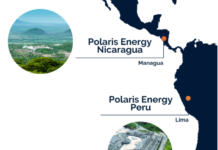Paul Schwabe
Among renewable resources, one of the most valuable attributes of geothermal electricity is the baseload characteristic of the energy resource. That is, geothermal electricity generators are able to deliver a stable level of power production over time. Yet for better or worse, this baseload characteristicalong with other notable factors such as size constraints and varying market segmentsreveals that interconnecting a geothermal plant to a transmission or distribution system poses unique challenges compared to other renewable energy technologies [1].
A recent report by NREL, “Geothermal Power and Interconnection: The Economics of Getting to the Market,” delves into the specialized world of geothermal transmission. Among other things, this report finds that from a transmission perspective, not all types of geothermal energy technologies are treated equally. Conventional hydrothermal technologies likely fit differently into the transmission framework than do emerging geothermal technologies such as enhanced geothermal systems (EGS), co-produced geothermal with oil and gas facilities and geopressured geothermal.
Table 1 shows three geothermal technologies and the corresponding market segment they serve. It also describes how particular attributes of each technology present challenges to connecting to the grid and how they may be considered in long term system planning.
For example, due to their large project size and their proven commercial viability, hydrothermal geothermal technologies offer a wide range of transmission options; the electricity produced by the plants can serve either local grid networks or be exported to other networks (referred to as balancing authorities, “BA,” in Table 1). The report’s author suggests that until they are proven, emerging technologies such as EGS are best utilized serving their home network, but if successful, electricity from these new technologies could eventually be transmitted to other networks as well. Meanwhile, co-produced and geopressured geothermal are likely restricted to distributed generation applications due to remote project locations, large electrical demand of the oil or gas facilities, and relatively small generation capacities (i.e., less than 5 MW).
 |
|
Table 1. Geothermal Generation Groupings and Transmission Requirements. Source: [1] |
The author also finds that there are several emerging markets in the Western United States where there is expected to be a near-term need for new baseload generation. These markets are largely where coal plants are expected to be taken offline in the next 5-10 years. It is estimated that there will be more than 3,000 MW of new baseload opportunities that will emerge from diminished coal usage across the Western United States [1]. While some of these resources will be replaced with other forms of fossil fuel electricity generation such as natural gas, there is likely enough of a need to also elicit interest from geothermal developers.
The report also shows what the author succinctly describes as “The Uphill Economics of New Transmission.” Generally, the cost of new transmission is determined by how much electricity the new line caries. Due to economies of scale, a MW of carrying capability on a large transmission line is cheaper than a MW of carrying capability on a smaller line. Figure 1 shows the cost of transmission per megawatt served over various transmission line sizes.
 |
|
Figure 1. Total Line and Substation Costs per Megawatt of Transmission Capability. Source: [1] |
Given that most U.S. geothermal plants are less than 80 megawatts in capacity, they are relatively small energy generators compared to other baseload electricity sources such as coal or natural gas power plants. Without economies of scale, new transmission for commercially available hydrothermal geothermal is a significant challenge, and in practice, drives even proven hydrothermal geothermal development into areas with existing, but underutilized transmission in place [1].
As each of these geothermal technologies offers the benefit of a stable electricity generation profile, there is likely to be a demand for the energy they produce. However, the role geothermal energy will play in long term transmission planning remains to be seen.
Paul Schwabe is an Energy Analyst with the National Renewable Energy Laboratory’s project finance team and has significant expertise in wind and geothermal projects. He has over 10 years of experience in the energy industry, including electricity market analysis, natural gas forecasting, and financial modeling.
This article was first published on the Renewable Energy Project Finance blog.








